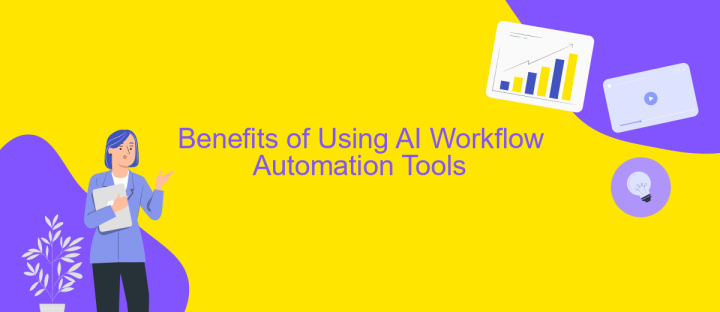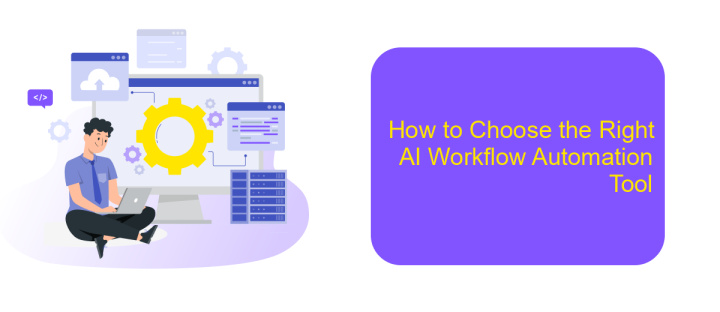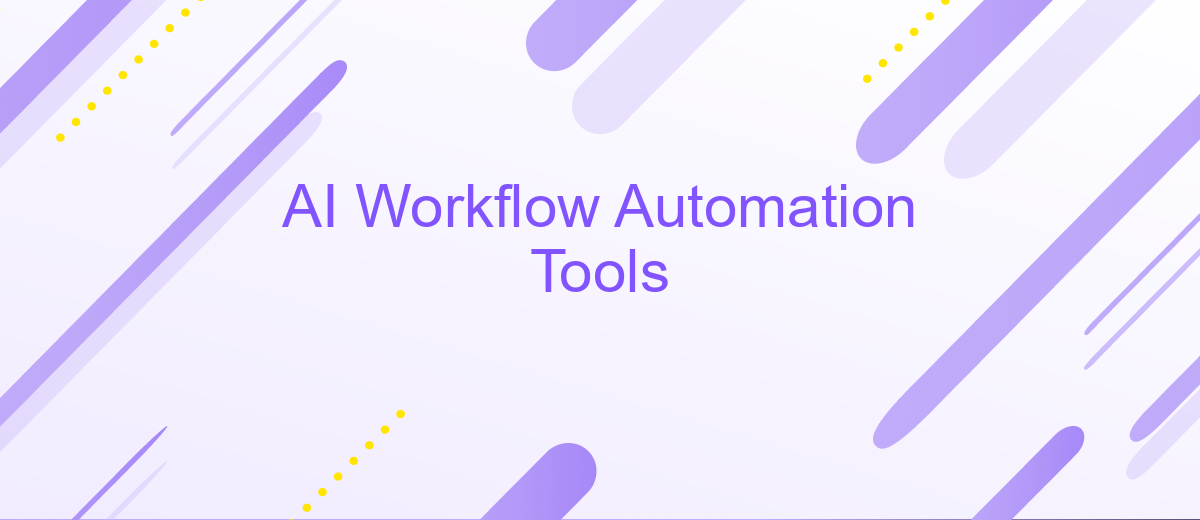AI Workflow Automation Tools
In today's fast-paced digital landscape, AI workflow automation tools are revolutionizing the way businesses operate. By streamlining processes, reducing human error, and enhancing productivity, these tools empower organizations to focus on innovation and growth. This article delves into the top AI-driven solutions that are transforming workflows across various industries, offering insights into their benefits and applications.
Introduction
In today's fast-paced digital landscape, the automation of workflows using AI tools has become a crucial aspect of business efficiency and productivity. These tools enable organizations to streamline processes, reduce manual labor, and enhance decision-making through intelligent automation.
- Seamless integration with existing systems
- Real-time data processing and analysis
- Reduction in human error
- Scalability and flexibility
One notable service in this domain is ApiX-Drive, which facilitates the integration of various applications and services without the need for coding. By leveraging such tools, businesses can easily connect disparate systems, ensuring a smooth and automated workflow. This not only saves time but also provides a reliable way to manage and optimize complex processes.
What are AI Workflow Automation Tools?

AI Workflow Automation Tools are software solutions designed to streamline and optimize business processes by leveraging artificial intelligence. These tools automate repetitive tasks, reduce human error, and enhance productivity by integrating various applications and services. They can be used across different industries to manage tasks such as data entry, customer service, and project management, allowing employees to focus on more strategic activities.
One key feature of AI Workflow Automation Tools is their ability to integrate with other software and platforms seamlessly. For instance, services like ApiX-Drive facilitate the connection between different applications, enabling data to flow smoothly and actions to be triggered automatically. By using such integrations, businesses can create a cohesive and efficient workflow, reducing the need for manual intervention and ensuring that all systems work in harmony. This results in faster, more accurate operations and ultimately leads to improved business outcomes.
Benefits of Using AI Workflow Automation Tools

AI Workflow Automation Tools offer numerous advantages for businesses looking to streamline their operations and increase efficiency. These tools can significantly reduce manual labor and human error, allowing teams to focus on more strategic tasks.
- Increased Efficiency: Automating repetitive tasks saves time and allows employees to dedicate their efforts to more valuable activities.
- Cost Reduction: By minimizing manual labor, businesses can lower operational costs and allocate resources more effectively.
- Enhanced Accuracy: Automation reduces the risk of human error, ensuring tasks are completed with greater precision.
- Scalability: AI tools can easily scale with business growth, handling increased workloads without the need for additional staff.
- Improved Integration: Services like ApiX-Drive facilitate seamless integration between various business applications, enhancing overall workflow.
By leveraging AI Workflow Automation Tools, companies can not only achieve operational excellence but also gain a competitive edge in the market. The ability to integrate different systems through platforms like ApiX-Drive further amplifies these benefits, making it easier to manage and optimize business processes.
How to Choose the Right AI Workflow Automation Tool

Choosing the right AI workflow automation tool can significantly enhance your business efficiency. Start by identifying your specific needs and goals, such as streamlining repetitive tasks or improving data accuracy. Consider the complexity of your workflows and the level of customization you require.
Next, evaluate the integration capabilities of the tool. Ensure it can seamlessly connect with your existing systems and applications. For instance, ApiX-Drive offers robust integration options, enabling smooth data transfer between various platforms without the need for coding skills.
- Assess the user interface and ease of use.
- Check the scalability to accommodate future growth.
- Review the customer support and available resources.
- Compare pricing models to fit your budget.
Finally, take advantage of free trials or demos to test the tool's functionality before making a decision. By carefully considering these factors, you can select an AI workflow automation tool that aligns with your business objectives and enhances overall productivity.
Conclusion
In conclusion, AI workflow automation tools are revolutionizing the way businesses operate by streamlining processes and increasing efficiency. These tools not only reduce the time and effort required to complete tasks but also minimize human error, leading to more accurate and reliable outcomes. By leveraging AI, companies can focus on strategic initiatives and innovation rather than getting bogged down by repetitive tasks.
Furthermore, integrating different systems and automating workflows has become more accessible with services like ApiX-Drive. This platform simplifies the process of connecting various applications, enabling seamless data transfer and synchronization. As a result, businesses can achieve a higher level of automation without the need for extensive technical expertise. Embracing AI workflow automation tools and integration services like ApiX-Drive can significantly enhance operational efficiency and drive growth in today's competitive landscape.
FAQ
What is AI workflow automation?
How can AI workflow automation tools benefit my business?
What types of tasks can be automated using AI workflow automation tools?
How difficult is it to set up AI workflow automation tools?
What should I consider when choosing an AI workflow automation tool?
Time is the most valuable resource in today's business realities. By eliminating the routine from work processes, you will get more opportunities to implement the most daring plans and ideas. Choose – you can continue to waste time, money and nerves on inefficient solutions, or you can use ApiX-Drive, automating work processes and achieving results with minimal investment of money, effort and human resources.

